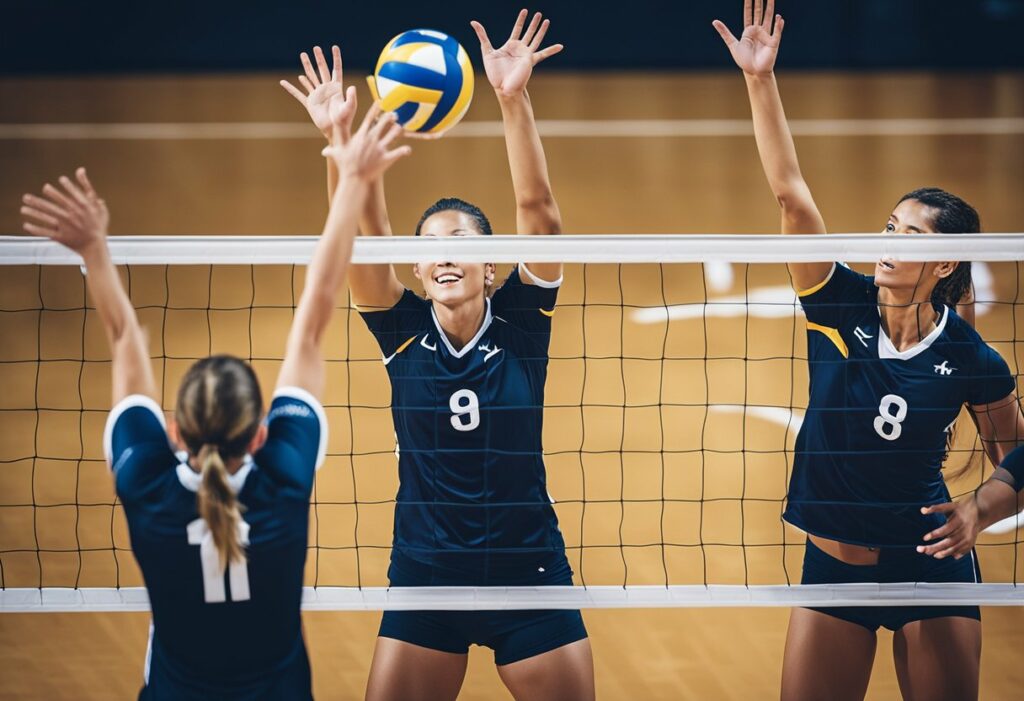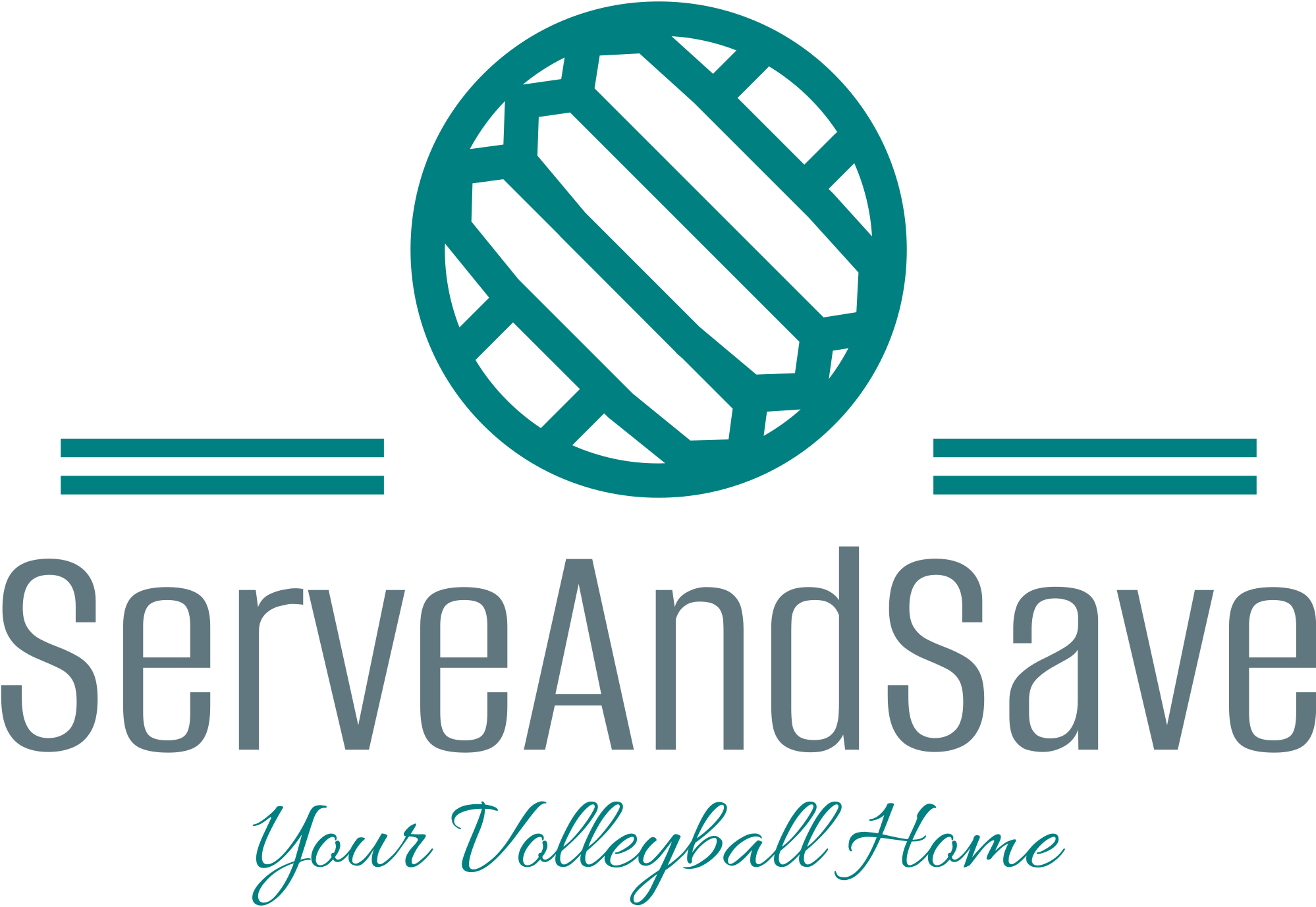In volleyball, players come in all shapes and sizes, but height can play a significant role in performance. The average height of competitive female volleyball players is about 5 feet 10 inches, while male players typically average around 6 feet 3 inches.

Height can affect various aspects of the game, from blocking to spiking. Taller players often have a natural advantage when reaching for the ball. Yet, agility and technique are equally important, making it essential for all players to find their unique strengths.
Many fans might wonder how height impacts the game. Understanding the average height among volleyball players can help fans appreciate the skills involved and the physical demands of the sport.
As the game evolves, players continue to push the boundaries of what is possible, making each match exciting to watch!
The Importance of Height in Volleyball
Height plays a crucial role in volleyball. Taller players can enhance their team’s performance through better blocking, attacking, and serving abilities.
Comparing Positional Height Requirements
Different positions require different heights for optimal performance. For example, middle blockers often stand anywhere from 6’2″ to 6’8″. This height helps them reach high balls and effectively block opponents’ spikes.
Outside hitters usually range from 5’10” to 6’5″. They need a combination of height and agility to attack from the corners. Setting often requires skill over height, but taller setters can deliver better angles.
Libero players, who focus on defense, can be shorter, typically around 5’6″ to 5’10”. Their agility and quick reflexes are more vital than height, allowing them to excel at digging balls and making precise passes.
Height Advantages in Volleyball
Taller players naturally have benefits in various aspects of the game. Blocking becomes easier as they can reach higher, making it challenging for opponents to score.
In attacking, height allows for better angles when spiking the ball. A taller player can hit down at opponents, increasing the chances of scoring points. Additionally, they can serve over defenders effectively.
Height also helps in court coverage. Taller players can see over the net, making it easier to read the game and anticipate plays. This visibility can be crucial in high-pressure situations.
In summary, height in volleyball provides specific advantages that can significantly impact performance on the court.
Average Heights of Professional Volleyball Players

Professional volleyball players come in different heights, which can impact their performance and position on the court. Heights vary between men’s and women’s volleyball, as well as among different positions. Let’s take a closer look at these averages.
Men’s Volleyball Player Heights
Men’s volleyball players tend to be taller than many athletes in other sports. The average height of male players in professional leagues is about 6 feet 6 inches (198 cm).
Top players can reach heights of 6 feet 10 inches (208 cm) or more. This height provides an advantage for spiking and blocking. Countries like Brazil, Russia, and the United States often produce some of the tallest players.
Team averages also vary based on the league. For example, players in national teams may have slightly taller rosters compared to club teams.
Women’s Volleyball Player Heights
Women’s professional volleyball players are also quite tall, though generally shorter than their male counterparts. The average height for female players in top leagues is around 6 feet 0 inches (183 cm).
Some standout athletes can be as tall as 6 feet 5 inches (196 cm). Height in women’s volleyball improves reach for blocking and attacking. Teams in countries like Italy, Turkey, and Japan are known for their taller players.
Like men’s teams, women’s team heights can vary based on the league and the country.
International Averages by Position
Height averages also differ by position in volleyball. Here’s a quick breakdown:
- Outside Hitters: Average height is about 6 feet 3 inches (190 cm). Outside hitters need to be able to jump high and have strong attacking skills.
- Middle Blockers: These players are often the tallest, averaging around 6 feet 7 inches (201 cm). Their main job is to block and make quick attacks.
- Setters: Generally shorter, setters average about 6 feet 1 inch (185 cm). They need speed and agility to distribute the ball effectively.
- Libero: This defensive specialist is typically shorter, averaging around 5 feet 9 inches (175 cm). Their quick movements are crucial for receiving serves and digs.
Height Trends Over Time

Player height in volleyball has seen exciting changes over the years. Different factors, including the evolution of the sport and training techniques, have influenced these height trends.
Historical Changes in Player Height
In the early years of volleyball, players were generally shorter, averaging around 5’8″ to 6′. As the sport grew in popularity during the 1980s and 1990s, player height began to rise. The average male player in international competitions reached about 6’4″, while female players averaged around 6′. This trend continued, with more recent data showing male players often exceeding 6’6″ and females reaching 6’2″ or taller.
Table of Average Heights Over the Years:
| Year | Male Average Height | Female Average Height |
| 1970s | 5’8″ | 5’6″ |
| 1980s | 6’0″ | 5’8″ |
| 1990s | 6’4″ | 6’0″ |
| 2000s | 6’6″ | 6’2″ |
The Evolution of the Sport and Player Physiques
As volleyball evolved into both a professional sport and an Olympic activity, athletes began focusing on physical attributes. Training methods, nutrition, and coaching have increased player height and physical strength. Advanced conditioning programs promote the development of taller and more athletic players.
Moreover, professional leagues have emphasized height as a crucial factor for success. Taller players often dominate the net, excelling in blocking and attacking.
As a result, many athletes pursue volleyball with the goal of achieving greater height and skill, leading to a noticeable shift in player physiques today.
Impact of Height on Player Performance

Height can greatly influence how well a volleyball player performs on the court. Taller players often have advantages in areas like blocking and hitting. While height can help, other skills also play a crucial role in a player’s success.
Statistical Analysis
Research shows that height impacts various performance metrics in volleyball. For instance, taller players tend to have higher vertical jumps. A study found that players over 6 feet tall scored significantly more points during matches than shorter teammates.
- Height Group Performance:
- 6’0″ and taller: Higher blocking efficiency
- 5’8″ to 5’11”: Stronger serving accuracy
- Below 5’8″: Skilled in defensive maneuvers
These statistics highlight how height can define a player’s role and effectiveness in matches. Coaches often consider height when building their teams to maximize performance.
Player Skills Versus Height
While height offers advantages, player skills are equally important. A shorter player can excel with exceptional agility and quick reflexes. Great servers and setters often come from players who may not be the tallest, but possess other key skills.
Key Skills:
- Speed: Faster players can chase down the ball and defend effectively.
- Technique: Good technique allows for precise serves and hits.
Height can give players a boost, but talent, training, and teamwork shape a player’s success on the court. A balanced team includes various heights and skill sets to enhance performance.
Height Requirements for Youth and Amateur Leagues

Height can play a role in volleyball, but it is not the only factor that matters. Each league has its own guidelines and flexibility for youth and amateur players.
Youth Volleyball
In youth volleyball, height requirements are often not strictly enforced. This allows players of various heights to participate and grow in the sport.
Coaches and leagues focus more on skill development and teamwork than on height.
In many cases, leagues encourage players who are shorter to work on their agility and technique. This helps create well-rounded players.
It is common for youth programs to include players ranging from 4’8″ to 6’0″ or taller. The key is to foster a love for the game!
Collegiate Volleyball Standards
Collegiate volleyball tends to have more defined height norms, but these can vary by program. Many collegiate teams look for players who are 5’10” and up.
Positions also play a role in these standards. For example:
- Outside Hitters: Often around 6’0″ or taller.
- Middle Blockers: Usually 6’2″ or taller.
- Setters: Can be around 5’8″, depending on style.
While height can give players an advantage, solid technique, determination, and teamwork remain crucial. This ensures that every player has a chance to shine!



